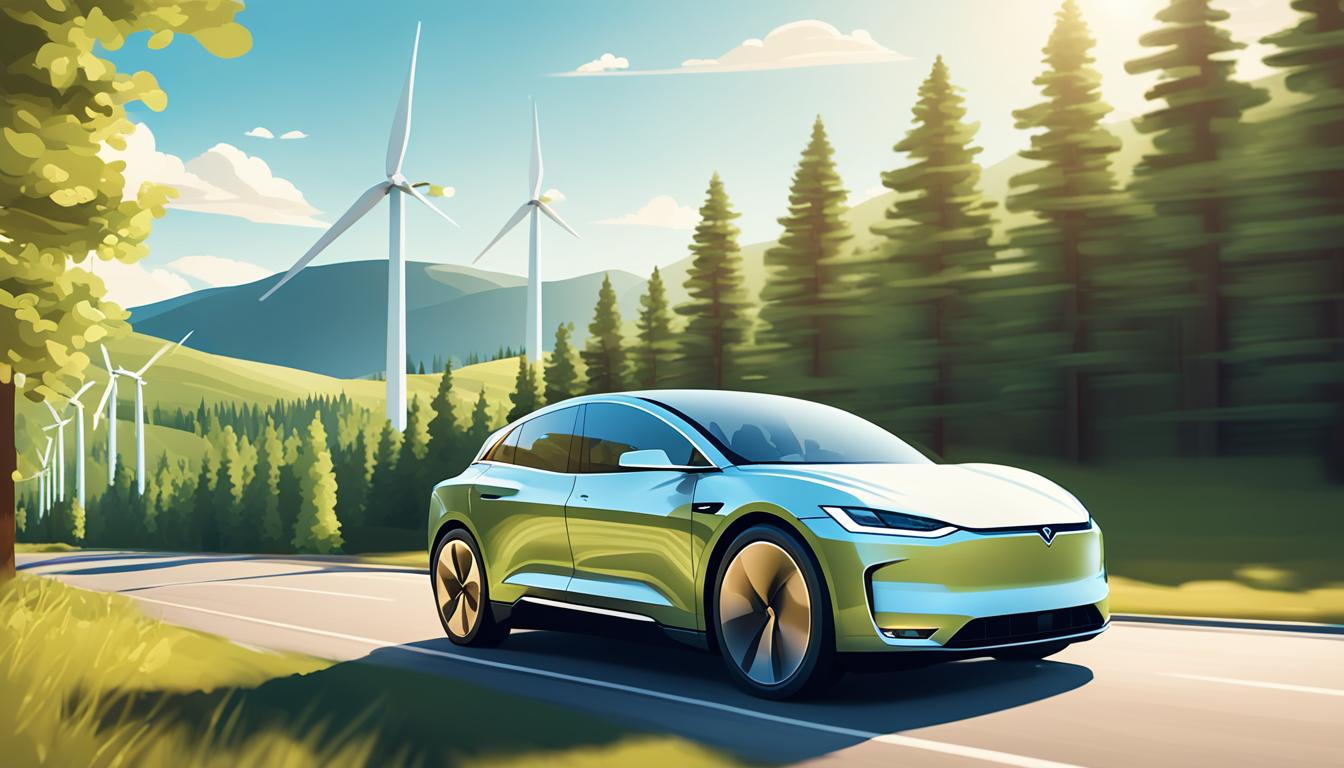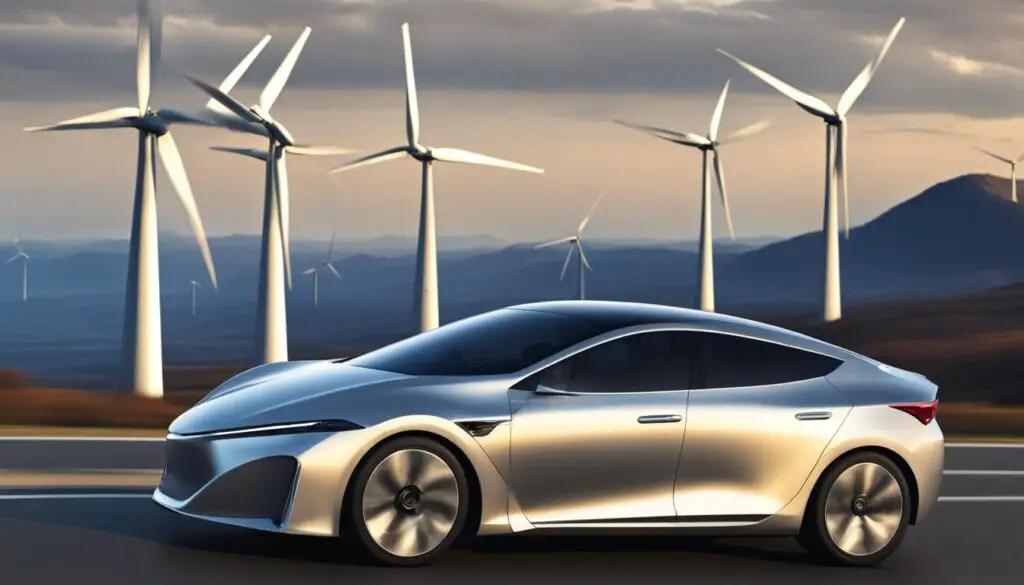
Powering the Future: Unveiling Plug-In Hybrid Technologies
As the world moves towards a more sustainable future, plug-in hybrid technologies are emerging as a key player in the automotive industry. These innovative technologies combine the best of both worlds, utilizing both electric power and a traditional combustion engine to offer a greener and more efficient mode of transportation. Plug-in hybrid vehicles are not only reducing carbon emissions but also paving the way for a greener future.
Key Takeaways:
- Plug-in hybrid technologies are revolutionizing the automotive industry
- These technologies offer a more sustainable mode of transit
- Revenue from plug-in hybrid vehicles has seen a significant increase
- Advancements in battery range and efficiency are driving the adoption of these vehicles
- Plug-in hybrid technologies have a positive impact on reducing carbon emissions
Advancements in Plug-In Hybrid Technology
The advancements in plug-in hybrid technology are driving the adoption of electric vehicles. Companies like Cellnex are revolutionizing the automotive industry by focusing on improving the battery range of plug-in hybrid vehicles, allowing for longer trips without the need for frequent charging.
Integrating smart control systems and implementing cost optimization measures have made plug-in hybrid technologies more efficient and cost-effective. These enhancements not only benefit consumers by reducing fuel costs but also contribute to a greener future by reducing carbon emissions.
“The integration of advanced hybrid technology into our vehicles has allowed us to significantly improve the overall driving experience while minimizing our carbon footprint. It’s exciting to witness the positive impact plug-in hybrid technology has on the environment and the automotive industry as a whole.”
– John Anderson, CEO of Cellnex
This progress in hybrid technology has paved the way for a sustainable transportation revolution. As the demand for electric vehicles rises, plug-in hybrid technologies are poised to become the future of the automotive industry, offering consumers a greener choice without compromising on performance and convenience.
Advancements in Battery Range
One of the significant advancements driving the adoption of plug-in hybrid vehicles is the improvement in battery range. Manufacturers are continuously developing more powerful batteries, enabling plug-in hybrids to travel longer distances before requiring a recharge. With extended battery range, plug-in hybrid vehicles offer a practical solution for daily commuting and longer trips, making them a versatile option for eco-conscious drivers.
Efficiency and Cost Optimization
Efficiency and cost optimization are also integral to the advancements in plug-in hybrid technology. Companies like Cellnex are utilizing smart control systems to optimize the coordination between the electric motor and combustion engine, maximizing the overall efficiency of plug-in hybrid vehicles. These systems allow for seamless transitions between different power modes, ensuring that energy is utilized effectively and efficiently.
Furthermore, cost optimization measures have been implemented to ensure that plug-in hybrid vehicles are not only environmentally friendly but also economically viable. By streamlining manufacturing processes and utilizing sustainable materials, manufacturers can offer plug-in hybrid vehicles at competitive prices, making them accessible to a wider range of consumers.
As the automotive industry continues to embrace hybrid technology, the advancements in plug-in hybrid technology will continue to evolve, contributing to a greener and more sustainable transportation landscape.

The Impact of Plug-In Hybrid Technologies on the Environment
Plug-in hybrid technologies have made significant strides in reducing carbon emissions and promoting sustainable transportation. By combining electric power with a traditional combustion engine, plug-in hybrid vehicles offer a more environmentally friendly alternative to conventional vehicles. With the rising awareness of the need to combat climate change, these technologies have gained traction among companies and individuals alike.
The reduction in carbon emissions is a key advantage of plug-in hybrid technologies. According to a report from Technavio, the global predictive analytics market, which includes plug-in hybrid technologies, is projected to reach a value of $21.60 billion by 2027. This growth highlights the increasing demand for these technologies and their potential to mitigate the environmental impact of transportation.
“Plug-in hybrid technologies play a vital role in reducing carbon emissions and promoting sustainable transportation. By integrating electric power with combustion engines, these vehicles offer a greener alternative for consumers.”
As more companies and individuals adopt plug-in hybrid technologies, the overall environmental impact of transportation is expected to decrease. This shift towards sustainable transportation aligns with efforts to achieve global climate goals and create cleaner and healthier communities.
One notable example of a company making significant strides in sustainable transportation is Tesla, known for its electric vehicles. Tesla’s commitment to reducing carbon emissions has made them a leader in the automotive industry. Their vehicles have proven the viability and benefits of electric-powered transportation, inspiring other manufacturers to invest in plug-in hybrid technologies.

The Benefits of Plug-In Hybrid Technologies
Plug-in hybrid technologies offer several benefits that contribute to sustainable transportation:
- Fuel efficiency: By combining electric power with a combustion engine, plug-in hybrid vehicles achieve higher fuel efficiency, reducing the amount of fossil fuels consumed and decreasing carbon emissions.
- Range flexibility: Plug-in hybrid vehicles provide the flexibility of using either electric power or the combustion engine, allowing for longer trips without the need for frequent recharging.
- Reduced dependency on fossil fuels: The integration of electric power reduces the reliance on conventional fossil fuels, reducing the environmental impact associated with their extraction and combustion.
These benefits, along with ongoing advancements in technology, are driving the widespread adoption of plug-in hybrid technologies, leading to a greener and more sustainable future for transportation.
Conclusion
Plug-in hybrid technologies are revolutionizing the automotive industry and laying the foundation for a sustainable future. With advancements in battery range, efficiency, and cost optimization, plug-in hybrid vehicles offer a greener alternative to traditional combustion engine vehicles. The impact of these technologies extends beyond the automotive industry, contributing to the global effort to reduce carbon emissions and promote sustainable transportation.
As more companies and individuals embrace plug-in hybrid technologies, we can envision a future where sustainable transit becomes the norm. The automotive industry is witnessing a shift towards greener solutions, driven by the growing awareness of environmental issues and the need to adopt more sustainable practices. Plug-in hybrid vehicles are at the forefront of this transition, offering a viable and eco-friendly option for commuters.
By combining the benefits of electric power and internal combustion engines, plug-in hybrid vehicles contribute to a significant reduction in carbon emissions. They provide a flexible and efficient means of transportation, ensuring that individuals can travel longer distances while minimizing their impact on the environment. The continuous improvement and adoption of plug-in hybrid technologies will play a crucial role in achieving a sustainable future for the automotive industry and the planet.
Join me in the eco-revolution and embrace plug-in hybrid technologies. Together, we can drive the automotive industry towards a greener future, one that prioritizes sustainability and helps create a cleaner and healthier planet for generations to come.
FAQ
What are plug-in hybrid technologies?
Plug-in hybrid technologies combine electric power with a traditional combustion engine, allowing for reduced emissions and increased fuel efficiency.
How do plug-in hybrid vehicles differ from conventional vehicles?
Plug-in hybrid vehicles have the ability to operate on both electric power and gasoline, providing a greater range and reduced environmental impact compared to conventional vehicles.
Are plug-in hybrid vehicles more expensive than traditional vehicles?
The initial cost of plug-in hybrid vehicles may be higher, but cost savings can be achieved through fuel efficiency and potential tax incentives for eco-friendly vehicles.
How far can a plug-in hybrid vehicle travel on electric power alone?
The electric range of plug-in hybrid vehicles varies, but advancements in battery technology have allowed for longer electric ranges, typically ranging from 20 to 50 miles.
How often do plug-in hybrid vehicles need to be charged?
The charging frequency of a plug-in hybrid vehicle depends on the driving habits and the availability of charging infrastructure. Generally, plug-in hybrid vehicles are charged overnight and can be topped up at public charging stations when needed.
What is the environmental impact of plug-in hybrid technologies?
Plug-in hybrid technologies contribute to a reduction in carbon emissions compared to conventional vehicles, helping to mitigate climate change and promote a greener future.
Can plug-in hybrid vehicles be used for long-distance travel?
Plug-in hybrid vehicles are well-suited for both short daily commutes and long-distance travel. With the combination of electric power and a traditional combustion engine, plug-in hybrid vehicles provide the flexibility to travel longer distances without range anxiety.
Are there any tax incentives or rebates available for plug-in hybrid vehicles?
Tax incentives and rebates for plug-in hybrid vehicles vary by country and region. In some areas, there are tax credits, rebates, or exemptions available to encourage the adoption of eco-friendly vehicles.
How can plug-in hybrid technologies contribute to a more sustainable transportation system?
Plug-in hybrid technologies help reduce carbon emissions and promote sustainable transportation by offering an alternative to conventional vehicles that rely solely on gasoline. As more plug-in hybrid vehicles are adopted, the overall environmental impact of transportation is expected to decrease.
What advancements can we expect in plug-in hybrid technologies in the future?
The future of plug-in hybrid technologies holds the potential for further improvements in battery range, charging infrastructure, and overall vehicle efficiency. Ongoing research and development aim to enhance these technologies and make them even more accessible and sustainable.
Source Links
- https://www.telecomtv.com/content/access-evolution/what-s-up-with-cellnex-rakuten-mobile-nokia-m-a-in-europe-49808/
- https://newscalping.com/top-42-thought-leaders-reveal-latest-trends-shaping-workplace-culture-and-technologies-in-av-it-industry/
- https://newsegregative.com/employee-centered-collaboration-technologies-the-future-of-workplace-culture-and-space-planning-in-2024/
